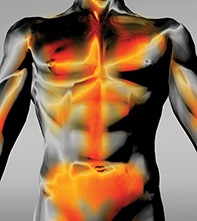Peer Reviewed
Feature Article Cardiovascular medicine
Burning vessels: a review of vasculitis for primary care
Abstract
The manifestations of vasculitis are protean and may mimic common diseases such as sinusitis and respiratory infections. Pathogenesis involves immune dysregulation, and treatment usually centres on intensive immunosuppression.
Key Points
- The manifestations of vasculitis depend on the size of the blood vessels affected by inflammation.
- Vasculitis leads to morbidity and mortality if not promptly and effectively treated.
- Symptoms are often nonspecific and may include fever, weight loss, fatigue, headache and rash.
- Features that should raise immediate suspicion for underlying vasculitis include asymmetric polyneuropathy, new-onset proteinuria or glomerular haematuria, headache combined with visual loss or palpable purpura.
- Urgent treatment is required for patients who present with deteriorating vision, haemoptysis or signs of rapidly progressive glomerulonephritis.
- Treatment depends on the extent of organ involvement but often involves intensive immunosuppression based on glucocorticoids.
- Rituximab may be used in organ-threatening disease at treatment outset.
Picture credit: © Carol and Mike Werner/Phototake/Diomedia.com
Purchase the PDF version of this article
Already a subscriber? Login here.

